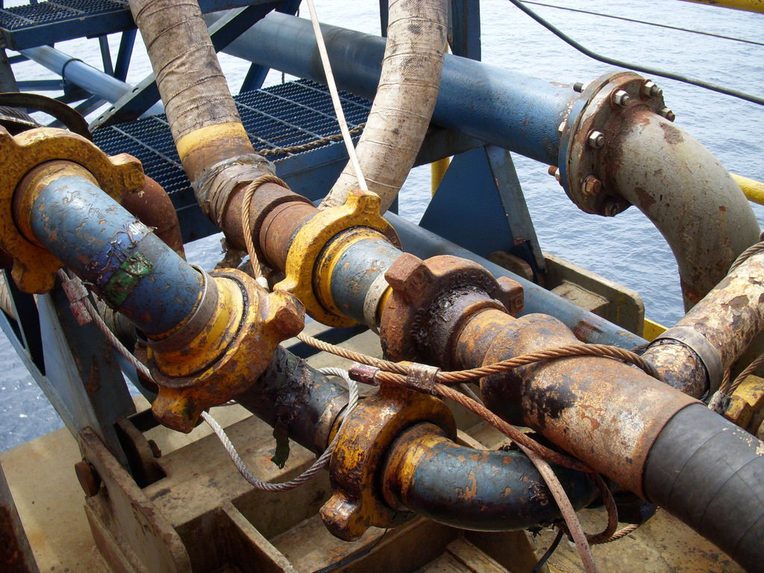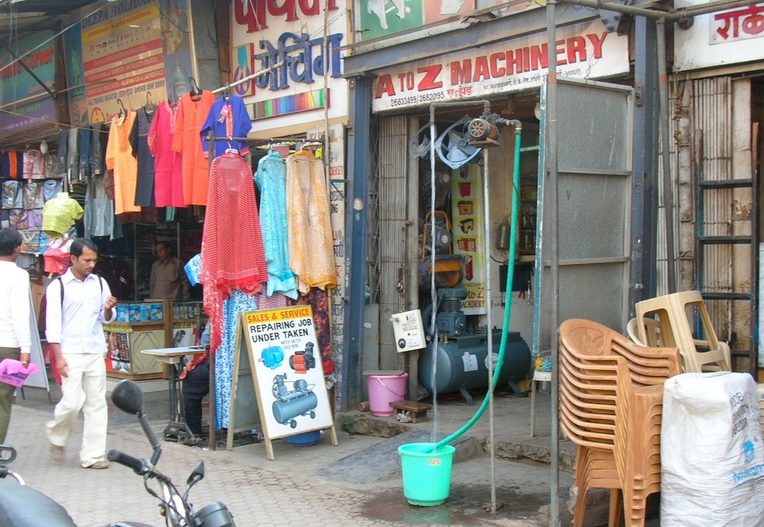Introduction: The Infrastructure Toolbox
From the Series: The Infrastructure Toolbox
From the Series: The Infrastructure Toolbox

Why an infrastructure toolbox? Infrastructure has long been a central conceptual tool—a productive metaphor—for critical theory and the analysis of social life more broadly. Take, for instance, Marxian references to infrastructure in theorizing capitalism (e.g., Althusser 1971). We speak of making concrete arguments, those (like infrastructure) that seem to offer tangible evidence of their claims. But what happens when infrastructure is no longer a metaphor? What happens to theory-making and ethnographic practice when roads and water pipes, bridges and fiber-optic cables themselves are our objects of engagement? In part, we need new tools—tools that allow us to think infrastructure’s metaphorical capacities with its material forms, and to think those material forms along with their capacities to generate aspiration and expectation, deferral and abandonment.

Like infrastructure, tools have also been “theory machines” (Galison 2003) in critical scholarship; they are objects in the world that are productive of theory (Helmreich 2011, 132). Most famously, Martin Heidegger’s (1962) attention to the working of the hammer helps distinguish between the invisibility of tools in everyday life (when they are “ready-to-hand”) and their visibility to thought and science when they break (when they become “present-at-hand”). By thinking with the hammer, Heidegger provides a tool for scholars to theorize the ubiquity of infrastructure, our normative expectations of its invisibility, and the power of formed objects not just to interrupt but also to form our imagination.
Like Heidegger’s hammer, the tools in the toolbox we present here offer concepts and methods to draw infrastructure out of the background and into the foreground of ethnographic research and theorizing. Like any ethnographically generated project, the set of terms included here—accretion, data, emplacement, ends, finance, form, materials, repair, sense, suspension, temporality—is partial and emergent rather than complete or totalizing. The terms that do appear are the result of diverse ethnographic engagements by ten scholars on five continents; the terms that do not are innumerable and lie in wait for future ethnographic exploration. Presented alphabetically, each entry offers an analytical opening—for what else does tool mean in theory-making other than something with which you open, ask, begin and start over? Each entry draws attention to the ways that infrastructure makes a variety of social, institutional, and material things (im)possible—from finance to education, from mobility to emplacement. An attention to infrastructure makes visible the world as both already structured and always in formation. Throughout the series, attention to infrastructure is also attention to sociality, to the ways infrastructure “attracts people, draws them in, coalesces and expends their capacities. . . . People work on things to work on each other, as these things work on them” (Simone 2012).

Infrastructures have long promised modernity, development, progress, and freedom to people and governments around the world. As deepwater rigs drill for oil in West Africa’s offshore waters, or as roads in Peru and Bangalore promise new connections, infrastructures are critical sites through which social and political systems are given form and performed. At the same time as they promise circulation and distribution, however, these precarious assemblies also threaten breakdown and failure. From the collapse of school buildings in China or electricity grids in the United States, infrastructural breakdowns saturate a particular politics of the present. As such, the material and political lives of infrastructure reveal fragile relations between people, things, and the institutions (both public and private) that seek to govern them. These more-than-human relations (Braun 2005) make infrastructure a productive location to examine the constitution, maintenance, and reproduction of political, economic, and social life.
In November 2014, the authors of the pieces in this series participated in a weeklong seminar at the School for Advanced Research in Santa Fe, New Mexico, where we explored the promise of infrastructure. Promise, here, not only of infrastructures to produce and maintain social life, but also for studies of infrastructure to make a situated intervention in anthropology. The seminar asked, first, what kinds of politics, socialities, and subjects are embedded/entailed/informed in infrastructure’s many forms? Second, why has infrastructure—inextricably bound up with projects of state formation and reform—become a critical site of politics today? How does it produce historically and materially situated forms of biopolitical government and citizenship? Finally, how do infrastructures participate in and produce changing forms of the public and the private, of states and corporations, of citizens and consumers? By attending to the formation, maintenance, and breakdown of roads, water pipes, or electricity grids in everyday life, we can ask how infrastructure helps us to theorize key anthropological questions about affect, aspiration, and imagination; about modernity, development, and temporality; and about the production of states and markets, the public and the private.
In the edited volume forthcoming from this collaborative seminar, we describe how attention to the everyday life of infrastructural assemblages promises new ways to think about time, publics, and biopolitics. Here we share our infrastructure toolbox—a set of analytic devices that the volume develops more fully. We are particularly delighted that this series also features essays by Steven Jackson and Adrian Mackenzie, as well as a discussion by Andrew Barry, because their work has been so influential in this field.
Althusser, Louis. 1971. “Ideology and Ideological State Apparatuses (Notes toward an Investigation).” In Lenin and Philosophy and Other Essays, translated by Ben Brewster. New York: Monthly Review Press.
Braun, Bruce. 2005. “Environmental Issues: Writing a More-than-Human Urban Geography.” Progress in Human Geography 29, no. 5: 635–50.
Galison, Peter. 2003. Einstein's Clocks and Poincaré’s Maps: Empires of Time. New York: W. W. Norton.
Heidegger, Martin. 1962. Being and Time. Translated by John Macquarrie and Edward Robinson. London: SCM Press. Originally published in 1927.
Helmreich, Stefan. 2011. “Nature/Culture/Seawater.” American Anthropologist 113, no. 1: 132– 44.
Simone, AbdouMaliq. 2012. “Infrastructure: Introductory Commentary by AbdouMaliq Simone.” In “Infrastructure,” Curated Collection edited by Jessica Lockrem and Adonia Lugo, Cultural Anthropology website, November 26.
Editor ReviewedPUBLISHED ONSeptember 24, 2015CITE ASAppel, Hannah, Anand, Nikhil and Gupta, Akhil."Introduction: The Infrastructure Toolbox."Theorizing the Contemporary, Cultural Anthropology website, September 24, 2015. Theorizing the ContemporaryCREATED" class="redactor-autoparser-object">https://culanth.org/fieldsights/714-introduction-the-infrastructure-toolboxCONVERSATION
CREATED BYEllie VainkerSHARE



Please log in or register to comment